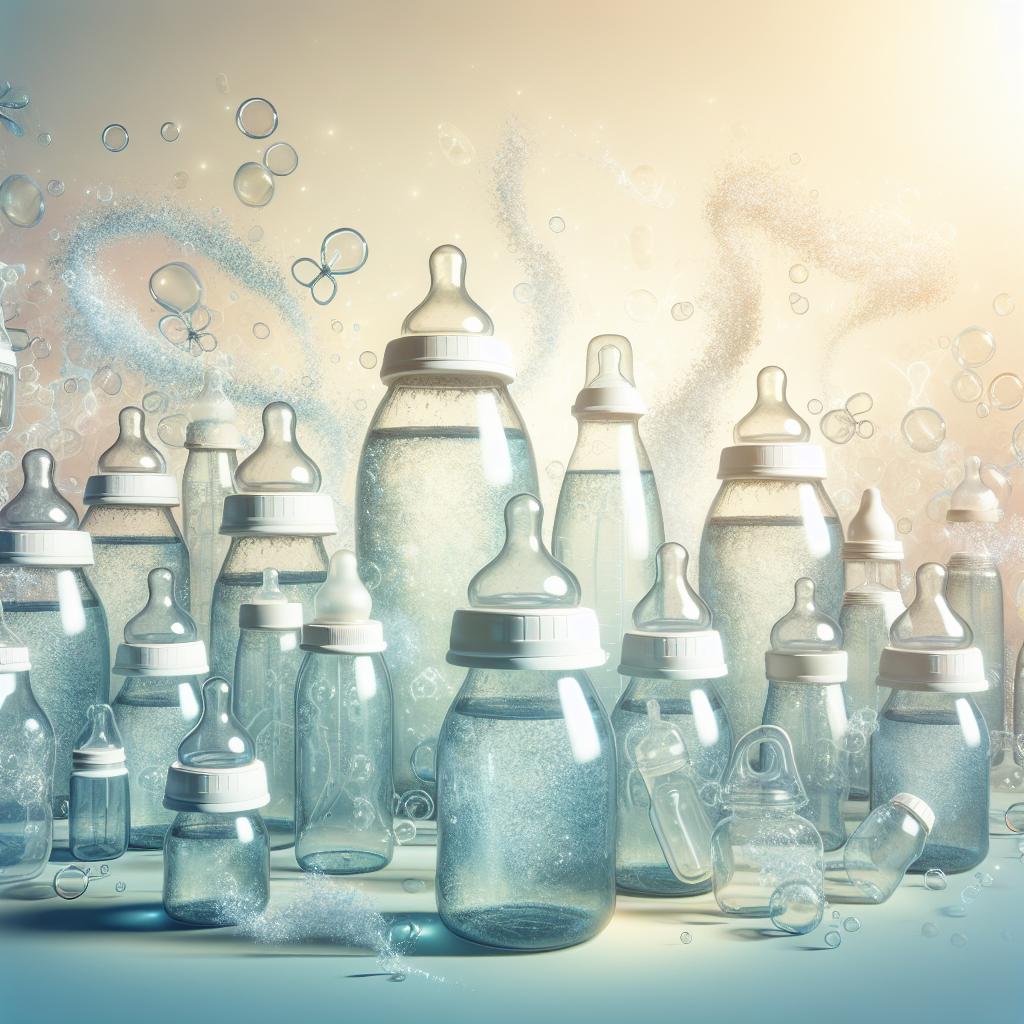Understanding Colic and the Need for Special Bottles
Colic in infants can be a significant concern for many parents. It often leads to sleepless nights and stress-filled days as you struggle to comfort your baby and find the root cause of their discomfort. Transitioning from breastfeeding to bottle feeding may sometimes contribute to colic. Luckily, innovative and scientifically designed, anti-colic bottles exist to help alleviate this problem.
The Function of Anti-Colic Bottles
But, what sets these bottles apart from regular feeding bottles? Anti-colic bottles are designed with unique venting systems that keep air separate from the milk or formula. This reduces the amount of air a baby swallows while feeding, which can lead to gas, colic, and discomfort. The various best anti-colic bottles in the market come with different venting systems, with some bottles having built-in vents or straw-like components.
Exploring the Best Anti-Colic Bottles
With numerous products available, finding the right bottles to prevent colic can be a daunting task for parents. To simplify your search, we’ve compiled a list of some popular and effective options:
- Philips Avent Anti-colic Bottles: These bottles are beloved for their easy-to-clean, two-piece venting system that reduces colic symptoms. Find out more here.
- Playtex VentAire Bottle: With a unique bottom vent, this bottle seeks to prevent air from mixing with the liquid, ensuring a happier and colic-free feeding experience for your baby. Learn more here.
Tips for Using Anti-Colic Bottles
While using these innovative bottles, there are a few crucial tips to remember to enhance their efficiency:
- Right Position: Tilt the bottle so the milk completely fills the nipple before your baby starts sucking. This assists in minimizing the air intake.
- Patience: Switching to a new bottle type may take some time for your baby to adjust. It’s critical to show patience and not rush the transition.
- Avoid Nipple Confusion: Transitioning from breastfeeding to bottle-feeding can lead to nipple confusion. Opt for bottles that mimic the natural shape of a mother’s breast to avoid this issue. Discover ways to avoid nipple confusion here.
Addressing Parental Concerns
While colic-free bottles can significantly help comfort your baby, it’s essential to understand that they are not a cure for colic. They are merely a tool designed to reduce the likelihood of your baby developing gas or other related discomforts. Alongside using specialized bottles, parents can also adopt multiple soothing techniques and consult with a pediatrician for comprehensive guidance. Addressing anxiety about bottle feeding is equally important for the overall well-being of both the parent and the baby.
Evidence Supporting Anti-Colic Bottles
Several studies have shown that anti-colic bottles can significantly reduce the symptoms of colic and increase overall feeding comfort. According to a study published in the Journal of Human Lactation, anti-colic bottles were found to decrease symptoms of colic in nearly 80% of the infants tested. Furthermore, a clinical trial shared by Healthline revealed that babies feeding with anti-colic bottles cried 50% less compared to those feeding with ordinary bottles. These pieces of evidence substantiate the effectiveness of anti-colic bottles in alleviating newborn discomfort.
Choosing the Right Anti-Colic Bottle
While there are multiple anti-colic bottles in the market, selecting the one that’s most suitable for your baby may involve some trial and error. Here are some factors to consider when choosing an anti-colic bottle:
- Type of Venting System: As previously mentioned, different bottles sport varying venting systems. Depending on your baby’s feeding habits, you might find certain systems more suitable than others. The Wirecutter provides an excellent comparison of the best baby bottles, including those with specialized venting systems.
- Bottle Material: The material of the bottle also plays a key role. While some parents prefer glass for its durability and resistance to odors, others might select plastic bottles for their lightness and unbreakability.
- Nipple Material and Shape: The material and shape of the nipple can significantly impact your baby’s feeding comfort. For instance, silicone nipples are generally more durable and resistant to bite marks than latex ones. Regarding shape, some babies may prefer a nipple that resembles a mother’s breast, reducing the risk of nipple confusion.
Some More Effective Anti-Colic Bottles
In addition to the Philips Avent Anti-colic Bottles and the Playtex VentAire Bottle, here are some other noteworthy options:
- Difrax S-Bottle: This bottle has a unique S shape and anti-colic valve that work together to prevent air ingestion, reducing potential colic symptoms. This Dutch-design is particularly recommended for combining breastfeeding and bottle-feeding. Check it out here.
- MAM Easy Start Anti-Colic Bottle: The MAM Easy Start Anti-Colic Bottle is a user favorite as per a poll on MadeForMums. This bottle houses a bottom-venting system for air escape and features a silicone nipple that babies seem to accept quite readily.
Investing in appropriate feeding equipment like anti-colic bottles can greatly contribute to a more comfortable and enjoyable feeding journey for both you and your baby. However, remember to supplement this with adequate parental care, routine pediatric visits, and a loving home environment to ensure your baby’s optimal growth and development.

